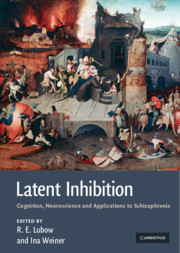22 - Issues in latent inhibition research and theory: an overview
from Summary and conclusions
Published online by Cambridge University Press: 04 August 2010
Summary
In composing this final chapter, we were faced with a number of decisions. On the one hand, we thought it useful to point out the shared elements and agreements amongst the chapters, as well as their differences and novel contributions. On the other hand, in spite of our efforts to ensure that the chapters of the book covered all of the important issues in LI research and theory, a number of topics remained either unresolved or unexplored. As a compromise, we have opted for the broadest possible summary, recognizing that it will be at the expense of depth, a debt that can be redeemed only by writing another book.
The present chapter, then, begins by summarizing a few latent inhibition (LI) facts and the major themes that are common to several or more chapters. Following this, methodological issues that have not been resolved, and which, we believe, deserve the future attention of researchers, are addressed. These include the role of masking, the need for new LI procedures, the distinction between two- and three-stage LI procedures, and the dual source of LI effects. The next major section takes up theoretical issues, examining specific behavioral theories of LI, with an attempt to integrate them, while pointing out the relevance for future research. The final section discusses the neuropsychology of LI particularly as it relates to schizophrenia.
- Type
- Chapter
- Information
- Latent InhibitionCognition, Neuroscience and Applications to Schizophrenia, pp. 531 - 557Publisher: Cambridge University PressPrint publication year: 2010
References
- 6
- Cited by

